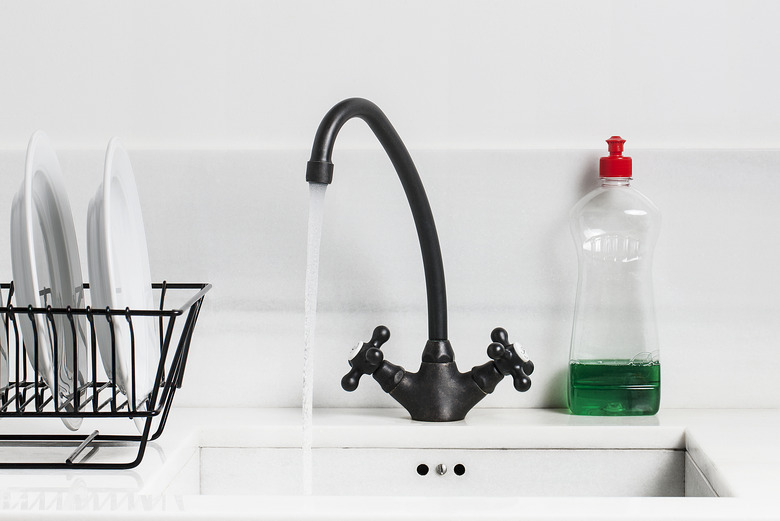Enamel Vs. Porcelain Sink
You have your choice of several different sink formats for your kitchen or bathroom, and the best choice of material depends on the format. Enamel and porcelain sinks are rather heavy and aren't ideal materials for undermount sinks, which must be supported from the countertop by clips or adhesive. Enamel and porcelain serve well for farmhouse sinks, which rest on a support structure. They also work well as the most common types of sinks: top-mounts, or drop-ins, which have rims to support them. Of the two materials, porcelain is the only option if your design calls for a vessel, pedestal or wall-hung sink.
Difference Between Porcelain and Enamel
Difference Between Porcelain and Enamel
An enamel sink isn't made entirely out of enamel, which would be impossible. It's usually made of cast iron or stainless steel and covered in a baked-on enamel finish. The finish is as durable as the one on your car, although much thicker, and like a car finish, it can chip and crack. However, with proper care, an enamel finish can last for years.
Porcelain is basically ceramic that has been fired at high heat to make it smooth and nonporous. You can mold porcelain into a sink all by itself, in which case the material may be called fireclay or vitreous china, or you can use it to coat another material, such as steel. Porcelain is easy to clean and sanitary — which is why it's the exclusive material for toilets — but it's somewhat fragile, and a molded porcelain sink can definitely crack and break.
Porcelain in the Kitchen
Porcelain in the Kitchen
Akin to clay or glass, porcelain is lighter than steel and can be molded, so it's a preferred material for specialty bathroom sinks, such as vessel and pedestal sinks. Its brittleness is a drawback in the kitchen, though, so if you're looking for a durable and easy-to-clean single or double top-mount or farmhouse kitchen sink, choose enameled cast iron. The longevity of this material can be demonstrated by countless examples that have lasted 100 years or more and are still in use.
About the only sink that can last as long in the kitchen as a steel or cast iron sink with a baked-on enamel coating is a steel or cast iron sink with a porcelain coating. In fact, almost all enameled sinks available today are coated with porcelain enamel, not the less-durable materials used on older sinks. Porcelain is less likely to wear away and create the unsightly rust spots you see on older enamel sinks. Also, because porcelain provides a thicker coating, the metal core can be thinner, making the sink lighter and more suitable for an undermount installation.
Porcelain and Enamel Sink Care
Porcelain and Enamel Sink Care
Because both pure porcelain and porcelain-enameled sinks have basically the same finish, you use the same cleaning methods on both. Houzer recommends washing the sink with a solution of water and dish detergent and periodically using a 50/50 solution of bleach and water to disinfect. Avoid the use of harsh cleaning tools, such as steel wool, and abrasive cleaners, such as scouring powder, which can dull the finish.
A porcelain or enamel finish can get stained by water with a high iron content. To remove these, make a paste of vinegar and a nonreactive cleaning powder, such as borax or laundry detergent. Coat the stains and leave the paste for several hours before washing it off. Rinse well with clean water and rub off any remaining discoloration with baking soda and a soft cloth.
